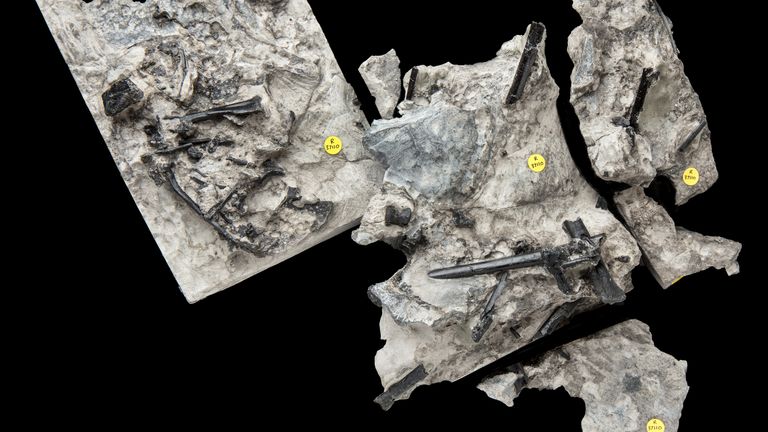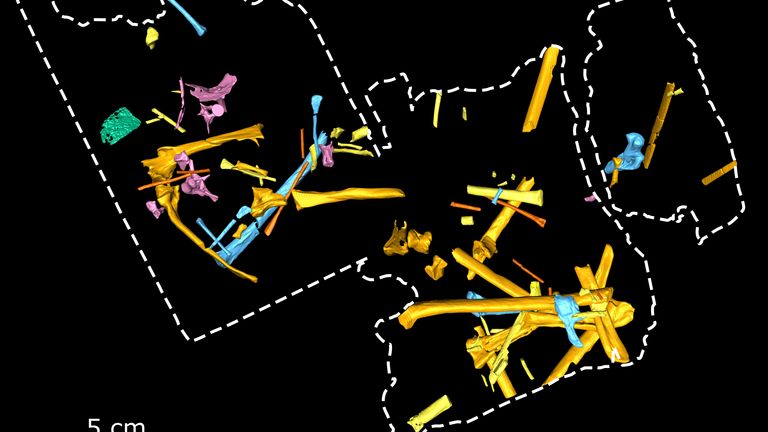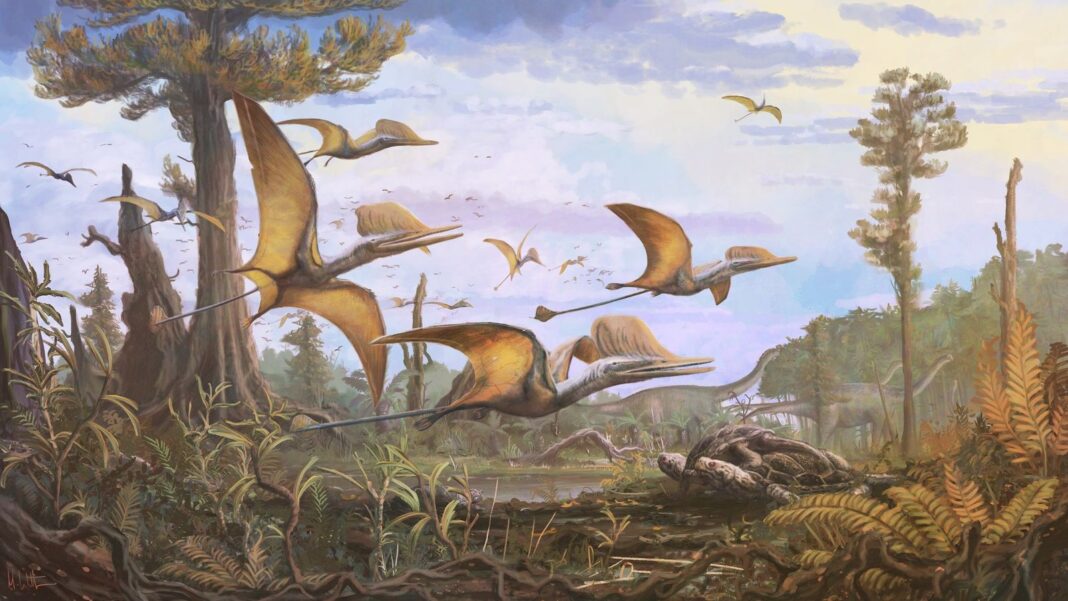A new species of pterosaur has been discovered on the Isle of Skye in Scotland.
The winged reptile, named Ceoptera evansae, lived between 168 to 166 million years ago during the Middle Jurassic period when dinosaurs roamed the Earth.
Professor Paul Barrett, merit researcher at the Natural History Museum, said the discovery was a “complete surprise” because “most of its close relatives are from China”.
Palaeontologists spotted the fossil remains in 2006 during a field trip to Elgol, on the southwest coast of the island.
Since then, the team have spent years physically preparing the specimen and taking scans of the bones, some of which remain completely embedded in rock.
Despite the skeleton being incomplete – with only parts of the shoulders, wings, legs and backbone remaining – the researchers said it provides key insights into the evolutionary history and diversity of pterosaurs.
Pterosaurs are sometimes referred to as pterodactyls – however pterodactyl is the actually the name for just one particular family of pterosaurs.
Researchers said the new species of pterosaur belongs to a group known as Darwinoptera, with many fossils also found in China.
Findings, published in the Journal Of Vertebrate Paleontology, suggest Darwinoptera may have been considerably more diverse than previously thought, persisting for more than 25 million years.
Professor Barrett said: “Ceoptera helps to narrow down the timing of several major events in the evolution of flying reptiles.
“Its appearance in the Middle Jurassic of the UK was a complete surprise, as most of its close relatives are from China.
“It shows that the advanced group of flying reptiles to which it belongs appeared earlier than we thought and quickly gained an almost worldwide distribution.”
Ceoptera evansae gets the first part of its name from the Scottish Gaelic word “cheo”, meaning mist or fog, and the Latin word “ptera”, meaning wing.

The new species was discovered as a fossil in the Isle of Skye. Pic: National History Museum
The second part, evansae, honours British palaeontologist Professor Susan E Evans for her years of scientific work, particularly on the Isle of Skye.
Read more from Sky News:
‘Teenage T. Rex’ skulls belong to different dinosaur
Dinosaur and mammal discovered ‘locked in mortal combat’

A National History Museum handout highlights different parts of the pterosaur’s skeleton found in the fossil
The researchers said that pterosaur fossils from the Middle Jurassic period are rare and mostly incomplete, hindering attempts to understand more about how these creatures evolved.
Lead author Dr Liz Martin-Silverstone, a palaeobiologist from the University of Bristol, said: “The time period that Ceoptera is from is one of the most important periods of pterosaur evolution, and is also one in which we have some of the fewest specimens, indicating its significance.
“To find that there were more bones embedded within the rock, some of which were integral in identifying what kind of pterosaur Ceoptera is, made this an even better find than initially thought.
“It brings us one step closer to understanding where and when the more advanced pterosaurs evolved.”







